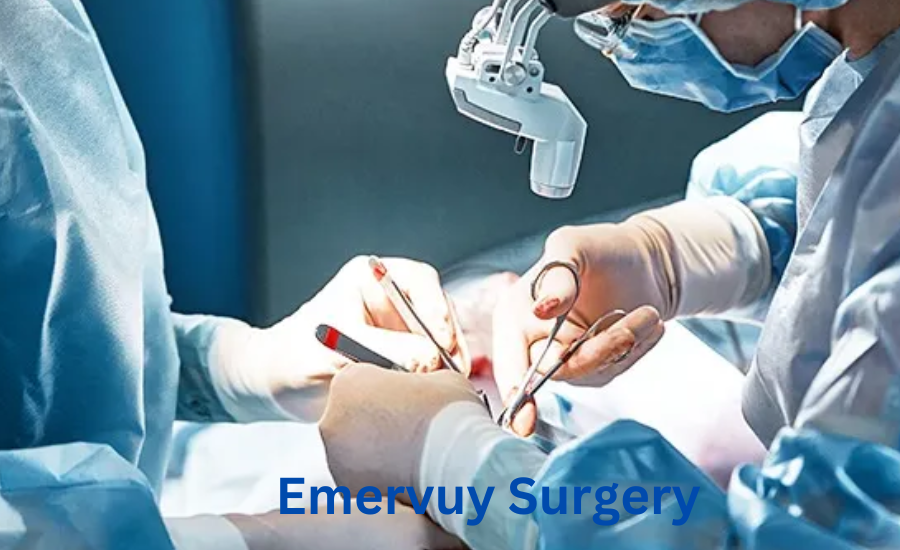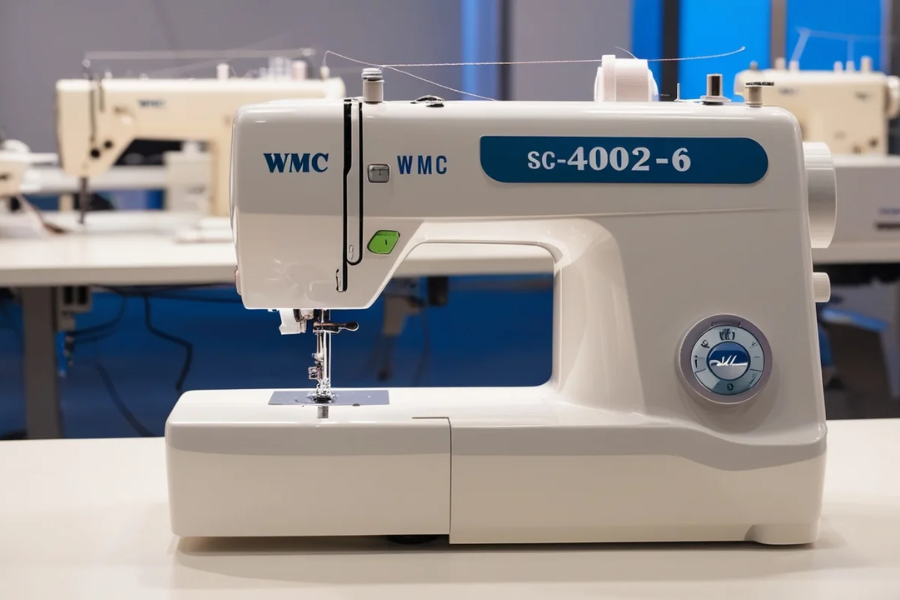Emervuy surgery has emerged as a groundbreaking advancement in the realm of medical interventions, offering a novel approach to addressing various health concerns. Although its techniques are rooted in long-established surgical principles, it has evolved significantly to incorporate state-of-the-art innovations. Today, Emervuy surgery is seen as a transformative option for patients who prioritize both effectiveness and comfort in their medical treatments. The procedure promises not only improved clinical outcomes but also a significantly more comfortable and quicker recovery process compared to traditional methods.
The history of Emervuy surgery is one of evolution, blending traditional surgical expertise with the latest in medical technology. This continuous refinement over the years has made it stand out as a preferred option for those seeking safer and more efficient surgical solutions. With an increasing number of patients turning to Emervuy surgery, it has become synonymous with a patient-first approach—prioritizing not only the success of the procedure but also the overall well-being and recovery experience of the individual.
By examining the key milestones in its development, one can appreciate the unique blend of technological advancement and patient-centered care that Emervuy surgery offers. This innovative procedure is reshaping how modern surgeries are performed, making it a compelling choice for many who demand both excellence and comfort in their healthcare journey.
The Evolution of Emervuy Surgery: From Tradition to Innovation
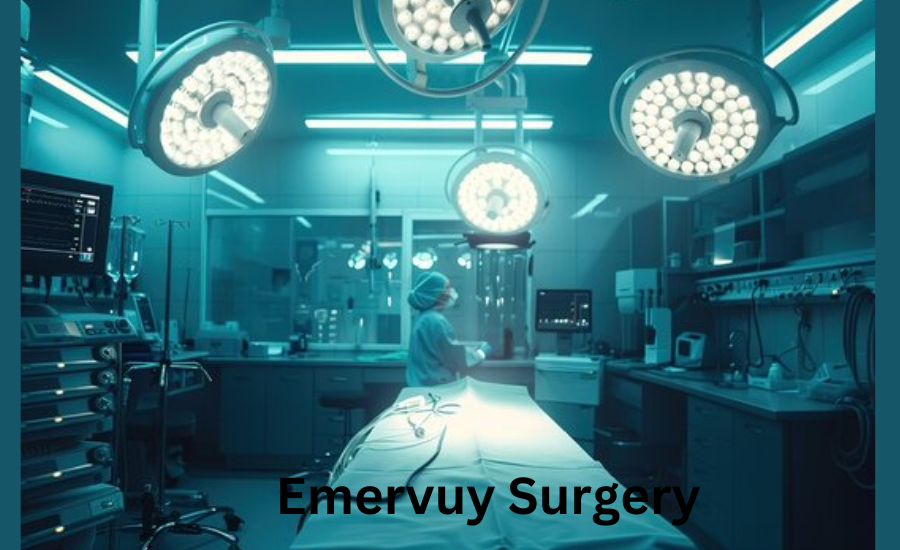
The origins of Emervuy surgery can be traced back to several decades ago, when it was initially developed as a response to specific medical needs. Early iterations of the technique were highly invasive, with surgeons relying on open procedures that involved large incisions, higher risks, and extended recovery periods. These early methods, while effective at the time, often placed significant strain on the patient, both physically and mentally.
However, as medical science advanced, so did the methods of Emervuy surgery. One of the most pivotal moments in its evolution came with the introduction of laparoscopic techniques. This marked a shift from traditional open surgeries to less invasive procedures, allowing for smaller incisions, reduced trauma to surrounding tissues, and faster recovery times. Laparoscopy not only minimized physical damage but also improved patient satisfaction by reducing hospital stays and post-operative complications.
The evolution didn’t stop there. In recent years, Emervuy surgery has embraced the use of robotic-assisted technology, pushing the boundaries of precision and efficiency in surgical care. The integration of robotics has revolutionized how these procedures are performed, enabling surgeons to operate with unparalleled accuracy. This breakthrough has contributed to significantly better outcomes for patients, further cementing Emervuy surgery as a leading choice for modern medical treatment.
A Testament to Progress: The Future of Emervuy Surgery
Today, Emervuy surgery exemplifies the remarkable progress that can be achieved when innovation and patient care go hand-in-hand. Every stage of its evolution reflects a dedication to improving outcomes, minimizing risks, and enhancing the overall patient experience. From its early days of invasive techniques to the modern-day integration of robotic systems, Emervuy surgery is a prime example of how medical practices can evolve to meet the ever-growing needs of patients.
As advancements in medical technology continue, the future of Emervuy surgery looks brighter than ever. Ongoing research promises even more refined techniques, aiming to make procedures even safer, more effective, and less invasive. It stands as a model of how the medical field can continually push forward, ensuring that patients receive the best care possible with each passing decade.
Innovations in Surgical Techniques: The Rise of Minimally Invasive Methods
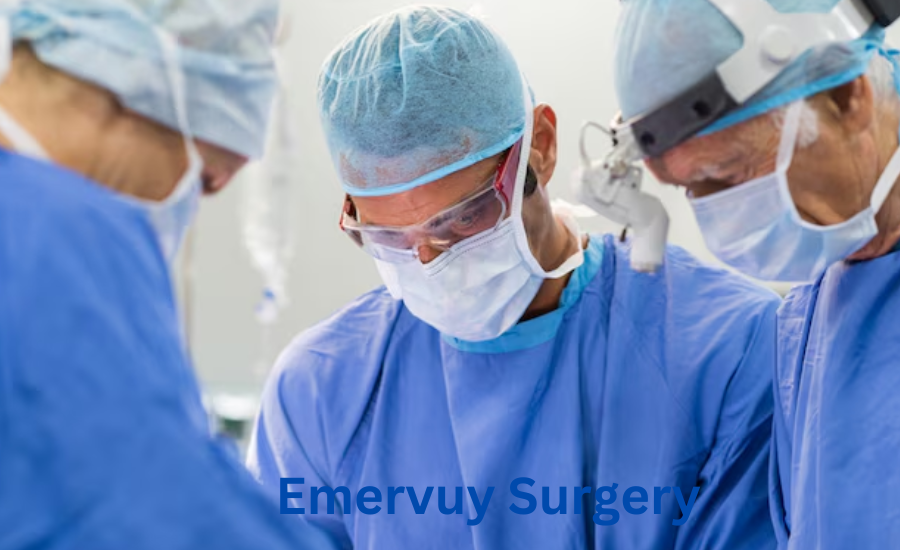
The development of minimally invasive techniques in emergency surgery marks a significant step forward in modern medical practices. Surgeons now rely on smaller incisions, which dramatically reduce the physical trauma associated with traditional surgical approaches. This transformation has reshaped patient experiences by lowering the risk of complications, minimizing visible scarring, and accelerating the healing process.
One of the key enablers of this advancement is the integration of cutting-edge imaging technologies. These tools provide surgeons with real-time, high-resolution visuals, allowing them to navigate complex procedures with extraordinary precision. By using advanced imaging systems, surgeons can accurately target the affected area while avoiding unnecessary damage to surrounding healthy tissues. This higher level of accuracy not only improves surgical outcomes but also significantly reduces the likelihood of post-operative complications, enhancing patient safety.
For patients, the benefits of minimally invasive surgery are profound. The reduced need for large incisions leads to less postoperative discomfort and quicker recovery times. This often means shorter hospital stays, allowing patients to return to their daily routines much faster than with traditional surgery. Additionally, the focus on minimizing invasiveness reflects a broader trend in modern healthcare: prioritizing patient comfort, safety, and overall satisfaction.
Furthermore, the rapid evolution of these techniques necessitates continuous professional development for healthcare providers. Surgeons and medical staff must regularly update their skills through specialized training programs, ensuring they remain at the forefront of the latest innovations. This commitment to ongoing education fosters a culture of excellence and continuous improvement in emergency surgery, ultimately benefiting patients through the delivery of safer and more effective care.
Advantages of Minimally Invasive Emervuy Surgery: Transforming Patient Care
Minimally invasive Emervuy surgery offers a wide array of benefits that significantly enhance the patient experience, making it an increasingly preferred option in modern surgical care. One of the most notable advantages is the drastically reduced recovery time. Patients often find themselves resuming normal activities much faster than they would with traditional, more invasive surgical procedures. This quick turnaround is especially important for those looking to minimize disruption to their daily lives and return to work or personal routines as soon as possible.
Another key benefit lies in the cosmetic outcomes. Because minimally invasive techniques use smaller incisions, there is considerably less trauma to the body’s tissues. This results in minimal scarring, which is a top priority for many patients. The aesthetic benefits not only improve physical appearance but also contribute to a higher level of patient satisfaction, as visible scars are often a concern when deciding on surgery.
The approach also brings significant improvements in pain management. Many patients report experiencing far less postoperative discomfort compared to traditional surgery. This decrease in pain often means a reduced need for strong pain medications, leading to a more comfortable and natural healing process. By relying less on painkillers, patients can avoid potential side effects and complications related to long-term medication use.
Minimally invasive Emervuy surgery also contributes to shorter hospital stays, which translates into a host of additional advantages. Patients can expect to spend less time in recovery rooms and more time in the comfort of their own homes. For many, this reduction in hospital time not only lowers healthcare costs but also lessens the psychological and emotional stress that often accompanies longer hospital visits. The financial savings from shorter stays, combined with quicker recovery, make this a highly attractive option for both patients and healthcare providers.
From a safety perspective, minimally invasive techniques offer surgeons enhanced precision and control. Advanced tools and imaging technologies allow for better visibility during procedures, which reduces the risk of complications that are more commonly associated with open surgeries. This increased precision improves overall surgical outcomes, promoting patient safety and boosting the long-term success rates of these procedures.
Cutting-Edge Technologies Revolutionizing Emervuy Surgery
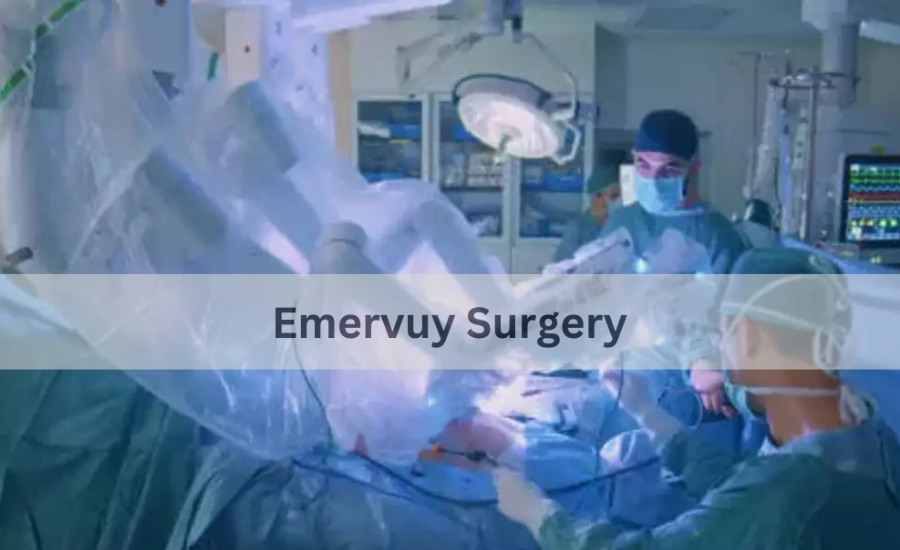
Emervuy surgery has undergone a technological transformation, incorporating cutting-edge innovations that significantly improve both precision and patient outcomes. One of the most notable advancements is the adoption of robotic-assisted surgical systems. These systems empower surgeons to perform intricate and complex procedures with exceptional precision, minimizing the risks associated with human error. The enhanced dexterity and control provided by robotic tools allow for more refined movements, reducing tissue damage and improving overall procedural success.
In addition to robotic assistance, advanced imaging techniques such as 3D visualization have redefined how surgeons approach operations. These technologies enable medical professionals to create highly detailed, patient-specific anatomical models before entering the operating room. By mapping out the exact layout of a patient’s body, surgeons can craft personalized, highly accurate surgical plans. This not only improves the success rate of procedures but also minimizes the risk of unforeseen complications, ensuring a safer experience for patients.
Artificial intelligence (AI) is another transformative force in Emervuy surgery. AI algorithms are capable of analyzing vast amounts of medical data, offering predictions about potential complications and guiding surgeons toward optimized outcomes. By continuously learning from real-world procedures, AI enhances decision-making, providing surgeons with insights that help reduce the likelihood of post-operative issues and improve overall patient safety.
Another leap forward in surgical technology comes in the form of advanced suturing materials. These next-generation sutures are designed to promote faster healing and reduce scarring, enhancing both the functional and cosmetic results of the surgery. For patients, this means not only a smoother recovery process but also better long-term physical outcomes, particularly in terms of aesthetics.
With these state-of-the-art technologies at their disposal, Emervuy surgeons are now able to perform procedures with a higher degree of accuracy, efficiency, and safety than ever before. These innovations don’t just enhance the technical aspects of surgery; they elevate the overall patient experience, offering improved recovery times, minimized risks, and superior cosmetic results. The ongoing integration of advanced tools and materials continues to push the boundaries of what is possible in the field of Emervuy surgery, making it one of the most progressive and patient-friendly options available today.
Recovery and Aftercare for Emervuy Surgery: A Path to Optimal Healing
The recovery period following Emervuy surgery is a critical component of achieving the best possible outcomes. Immediately after the procedure, patients are typically taken to a recovery room, where they are closely monitored by medical professionals to ensure stable vital signs and early detection of any potential complications. This initial phase of care helps set the stage for a smooth transition to home recovery.
Once discharged, rest becomes a cornerstone of the healing process. Most patients are advised to limit physical activity for at least a week, giving their bodies ample time to recover from the procedure. This period of rest is vital not only for physical recovery but also for reducing the risk of complications such as infection or strain on the surgical site.
Effective pain management is often necessary during the initial stages of recovery. Physicians typically prescribe pain relief medications or suggest over-the-counter options to help manage discomfort. Additionally, non-medication strategies such as cold compresses, elevation, and light movement may be recommended to ease post-operative soreness and swelling. It’s essential for patients to adhere to their doctor’s guidelines on pain management to ensure a comfortable and effective recovery process.
Follow-up appointments are equally important in the post-surgical phase. These checkups allow healthcare providers to evaluate how well the surgical site is healing and to identify any issues early on. During these visits, the surgeon will assess the wound, remove sutures if necessary, and provide ongoing guidance for recovery. Prompt attention to any concerns during these appointments can prevent minor issues from becoming major complications.
Nutrition also plays a significant role in accelerating recovery. A diet rich in vitamins, minerals, and protein can support the body’s natural healing processes, helping repair tissue and boost immune function. Nutrients like vitamin C and zinc are particularly beneficial for wound healing, while protein helps rebuild muscle and tissue. Patients are often advised to consume a well-balanced, nutrient-dense diet to promote quicker and more efficient recovery.
Hydration is another key factor in post-surgery healing. Staying well-hydrated aids in maintaining overall health, flushes out toxins, and prevents dehydration, which can slow down the healing process. Proper hydration also helps combat surgery-related fatigue and ensures that the body’s systems function optimally during recovery.
In summary, a successful recovery from Emervuy surgery requires a combination of adequate rest, proper pain management, diligent follow-up care, a nutrient-rich diet, and staying hydrated. By following these guidelines, patients can support their bodies’ healing processes and ensure a smoother, faster recovery.
The Future of Emervuy Surgery: Innovations on the Horizon
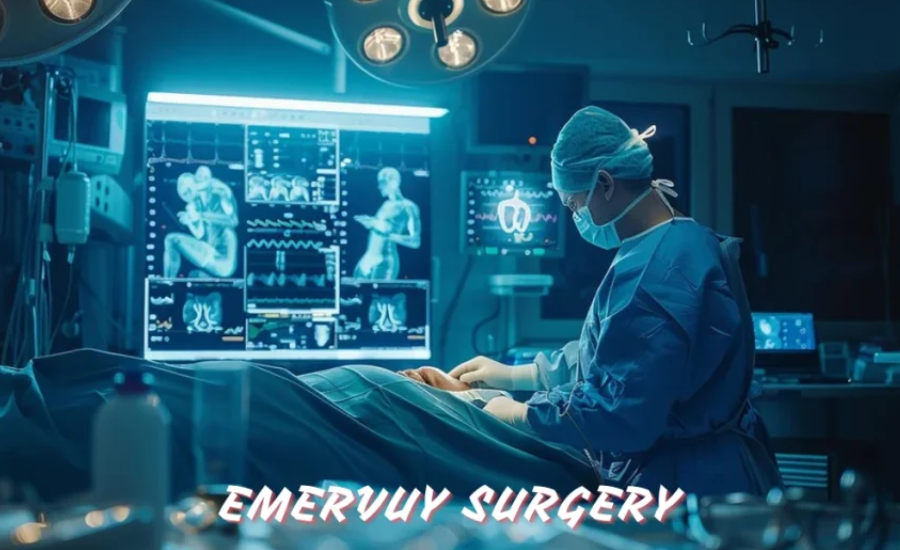
The future of Emervuy surgery holds immense promise, as ongoing technological advancements are set to revolutionize how surgeries are performed, enhancing both precision and patient safety. As the medical field continues to innovate, patients and surgeons alike can anticipate more refined techniques that push the boundaries of what’s possible in surgical care.
One area of rapid growth is the use of artificial intelligence (AI) in surgical planning and execution. AI’s potential to analyze vast amounts of patient data is set to reshape pre-operative planning. With machine learning algorithms, surgeons will have access to predictive models that offer more accurate insights into potential outcomes, risks, and patient-specific considerations. This data-driven approach could lead to more personalized surgical plans that increase the likelihood of success and minimize complications.
Robotics is another frontier poised for significant advancements. The next generation of robotic systems promises to bring even greater dexterity and precision to the operating room. These enhanced systems will allow surgeons to navigate complex anatomical structures with ease, reducing the margin for error. Robotic tools are expected to evolve with improved haptic feedback and refined motion control, enabling surgeons to perform procedures that are less invasive, more accurate, and ultimately safer for patients.
Advancements in imaging technologies are also on the horizon, offering real-time, high-definition visualization during surgery. These technologies will allow surgeons to view tissues and organs in unprecedented detail, enabling more accurate navigation of delicate areas and reducing the likelihood of unintended damage to surrounding tissues. Real-time imaging will provide continuous feedback throughout the procedure, ensuring that surgeons can make informed, on-the-spot adjustments to improve outcomes.
The post-operative landscape is likely to be transformed by telemedicine and remote monitoring tools. As healthcare continues to shift toward digital solutions, patients may benefit from enhanced post-operative care without the need for frequent in-person visits. Remote monitoring systems will enable healthcare providers to track a patient’s recovery progress, analyze vital signs, and address potential issues in real time, all from the comfort of the patient’s home. This advancement could significantly reduce hospital readmissions and improve overall recovery experiences.
As these technological advancements unfold, the future of Emervuy surgery looks brighter than ever. Patients can expect safer procedures, shorter recovery times, and more precise surgical outcomes. Surgeons, equipped with these cutting-edge tools, will be able to provide care that not only reduces risks but also enhances the overall patient experience, setting new standards for modern surgical practices.
FAQs About Emervuy Surgery
Q: What is Emervuy Surgery?
A: Emervuy surgery is a groundbreaking surgical approach that utilizes advanced techniques like robotic-assisted systems and minimally invasive methods to perform operations with increased precision, safety, and efficiency. It focuses on reducing trauma to the body and speeding up recovery times compared to traditional surgeries.
Q: What are the main benefits of Emervuy surgery?
A: Some of the key advantages include faster recovery times, minimal scarring, reduced postoperative pain, shorter hospital stays, and lower risks of complications. The minimally invasive techniques used in Emervuy surgery also lead to better cosmetic outcomes and a more comfortable recovery experience.
Q: How does robotic-assisted technology improve Emervuy surgery?
A: Robotic systems enhance the precision of surgical procedures, allowing for more refined movements and better control during operations. This results in less damage to surrounding tissues, leading to faster healing, fewer complications, and improved surgical outcomes.
Q: Is Emervuy surgery safe?
A: Yes, Emervuy surgery is considered a safe option, especially when performed by trained professionals using the latest technologies. The incorporation of advanced tools like AI and imaging systems helps minimize risks, providing a safer surgical experience for patients.
Q: What should I expect during recovery from Emervuy surgery?
A: After surgery, patients are closely monitored in a recovery room before being discharged to rest at home. Most patients experience less pain, quicker recovery times, and minimal scarring. Adherence to proper post-surgical care, including rest, pain management, hydration, and a balanced diet, can further enhance the recovery process.
Q: What is the future of Emervuy surgery?
A: The future of Emervuy surgery looks promising, with innovations such as AI, enhanced robotics, and real-time imaging technologies set to further improve the precision, safety, and patient outcomes of these procedures. Additionally, telemedicine is expected to revolutionize post-operative care by providing remote monitoring options.
Q: Who is a good candidate for Emervuy surgery?
A: Most individuals requiring surgery for specific medical conditions can be candidates for Emervuy surgery. However, it is important to consult with a healthcare professional to determine if this minimally invasive approach is suitable based on individual health conditions and surgical needs.
Conclusion
Emervuy surgery represents a breakthrough in modern medical procedures, combining advanced technologies like robotic-assisted systems, AI-driven data analysis, and state-of-the-art imaging to create a minimally invasive approach that enhances patient safety, shortens recovery times, and reduces pain and scarring. Its patient-centered focus on comfort and outcomes makes it a preferred option for many, while ongoing advancements in AI, robotics, and telemedicine promise to further improve the precision, safety, and overall effectiveness of these surgeries. Emervuy surgery continues to lead the way in innovative, high-quality surgical care.
Read Next: Doxfore5 Python
